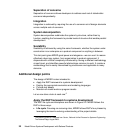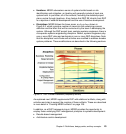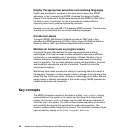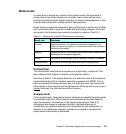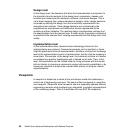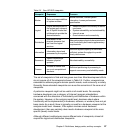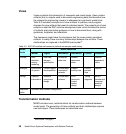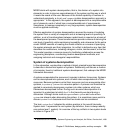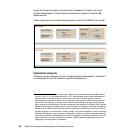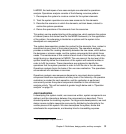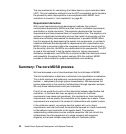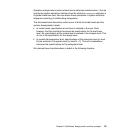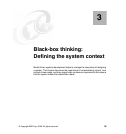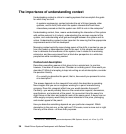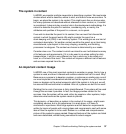
30 Model Driven Systems Development with Rational Products
Figure 2-3 shows the pattern that allows the framework to support recursive
system decomposition. The dotted lines between the systems indicate UML
dependencies.
These system levels are called decomposition levels in the MDSD meta model.
Figure 2-3 Levels of system decomposition
Operations analysis
Classical use case analysis is a form of requirements decomposition; therefore, it
is inadequate to meet the needs of systems development.
8
8
L. Balmelli, D. Brown, M. Cantor, and M. Mott, Model-driven systems development, IBM Systems
Journal, vol 45, no. 3, July/September 2006, p. 571: Requirements-driven systems development
methods define requirements early in the life cycle, after which the techniques of functional
decomposition are applied to determine the mapping of requirements to system components. At
every level of the hierarchy, functional analysis derives requirements, and engineering methods
derive measures of effectiveness. Once the requirements are described in sufficient detail, detailed
design activities begin. As systems become more complex and integrated, with fewer components
delivering more capability, this traditional approach becomes unwieldy due to the large number of
possible mappings. It is common for a modern system, such as an automobile, to have thousands
of detailed requirements and thousands of components, resulting in millions of possible mappings.
Faced with this dilemma, developers limit the level of integration, resulting in systems that may be
highly capable but are brittle and difficult to maintain. MDSD methods mitigate this explosion of
mappings by providing levels of abstraction.



